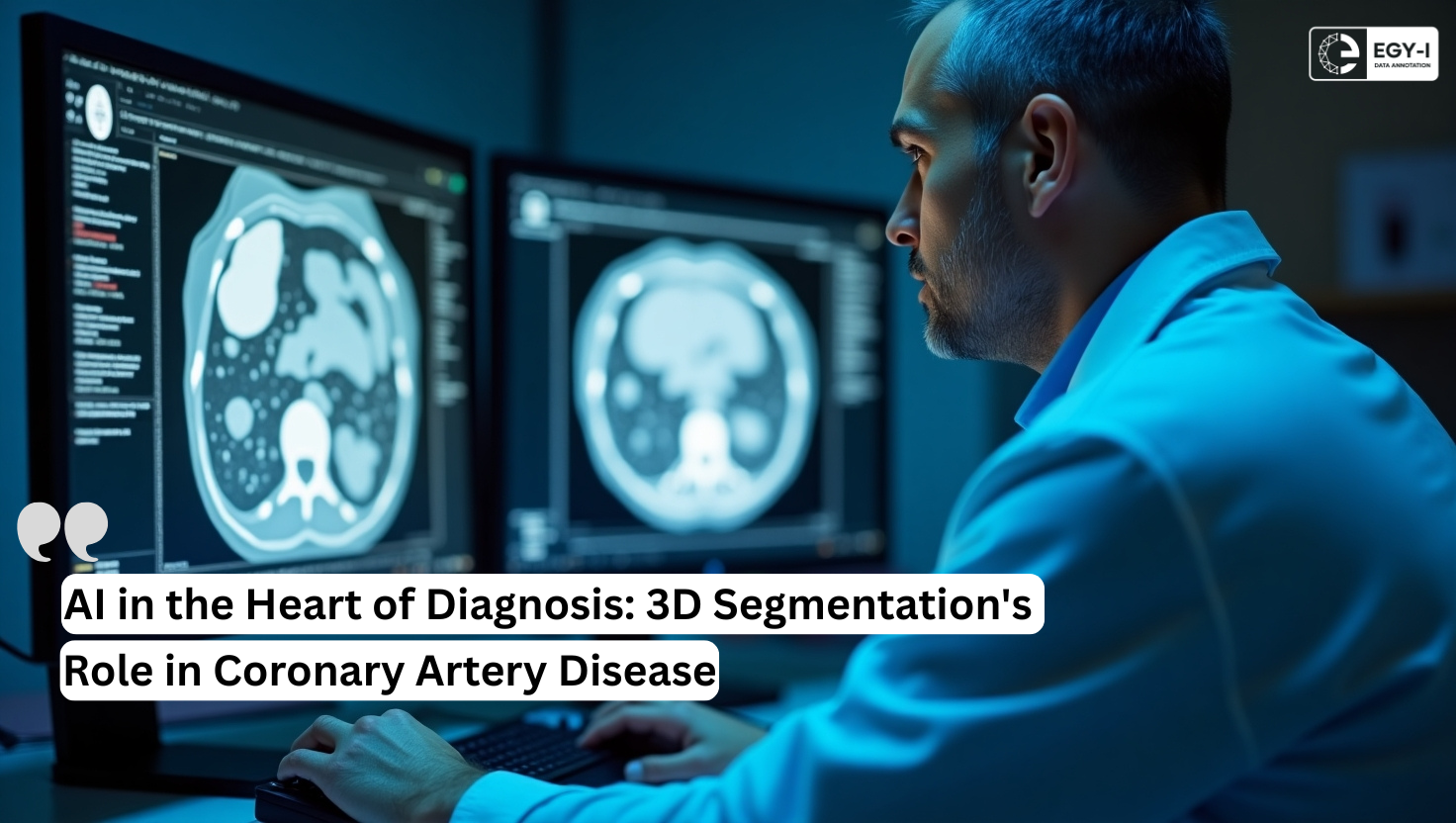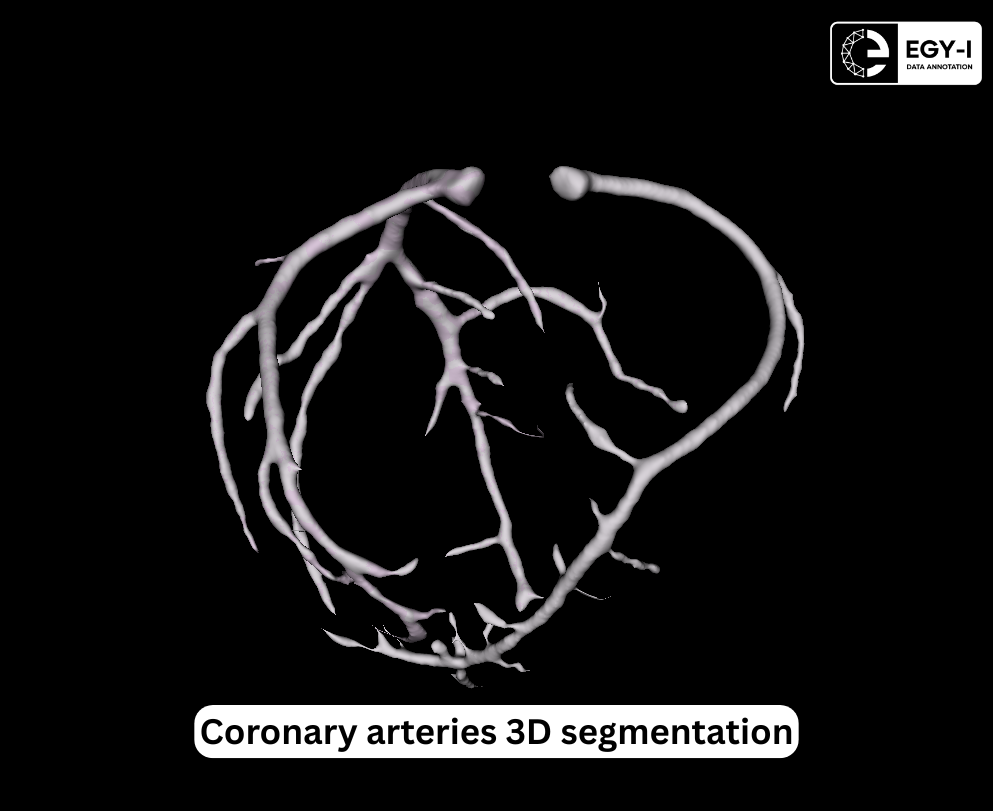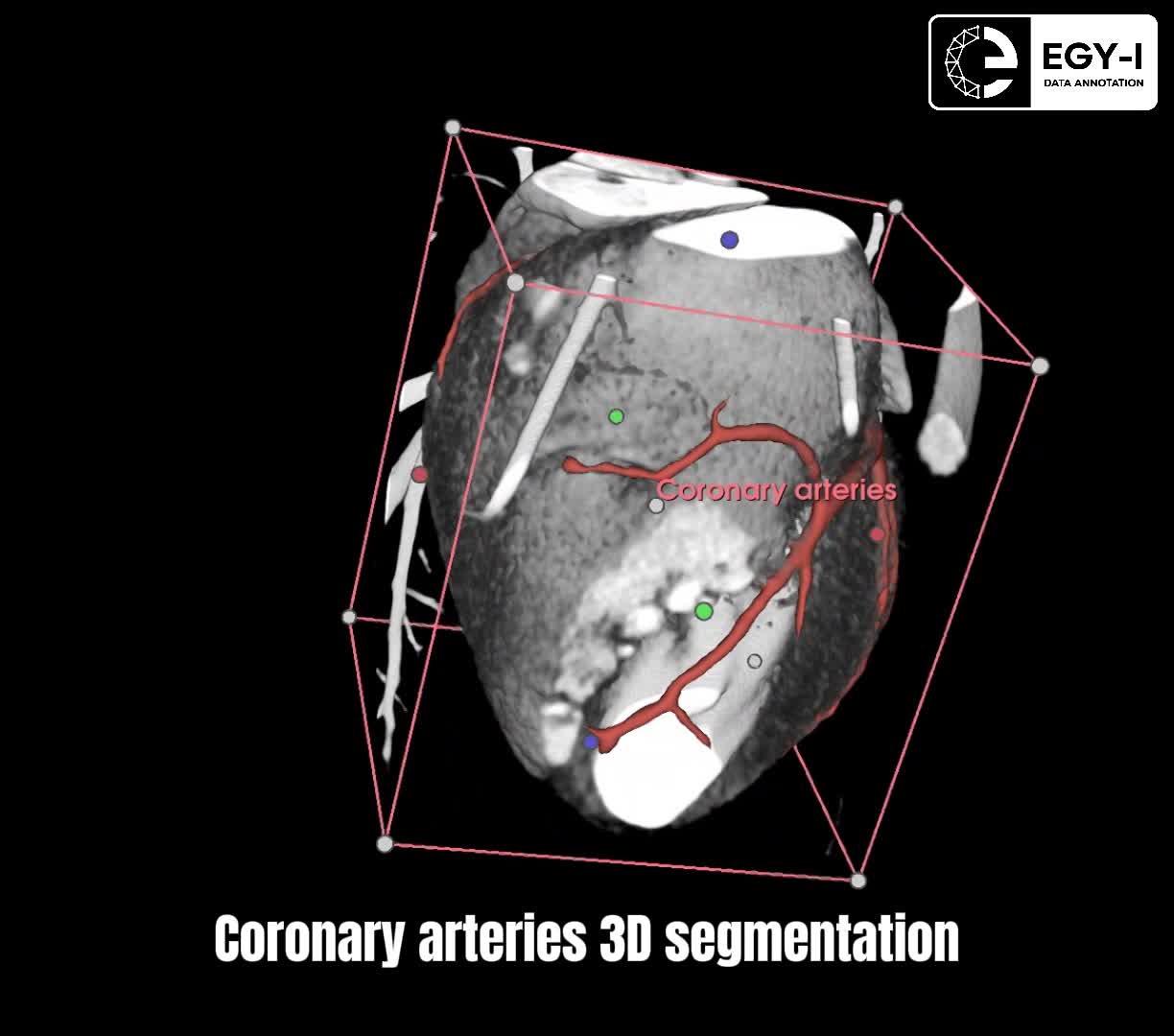AI in the Heart of Diagnosis: 3D Segmentation's Role in Coronary Artery Disease

Coronary artery disease (CAD), the most common type of heart disease, remains a leading cause of death worldwide. It occurs when plaque builds up inside the coronary arteries, reducing blood flow to the heart and potentially leading to chest pain, shortness of breath, heart attack, or even death. Early and accurate diagnosis is critical for effective treatment and improved patient outcomes. Traditionally, cardiologists rely on various imaging techniques, including coronary angiography and CT scans, to assess the extent of CAD. However, analyzing these complex images can be time-consuming and challenging. Artificial intelligence (AI) is emerging as a powerful tool to enhance the diagnosis and management of CAD, particularly through the use of 3D segmentation.
The Power of 3D Segmentation in CAD Imaging
Coronary arteries are intricate three-dimensional structures. Plaque buildup, or atherosclerosis, doesn't always occur uniformly; it can affect specific segments and branches of the arteries. Therefore, understanding the precise location and extent of plaque is vital for accurate diagnosis and treatment planning.

3D segmentation allows for the reconstruction of coronary arteries from CT angiography (CCTA) images, providing a detailed volumetric representation of the vessels. This approach offers several advantages over traditional 2D analysis:
- Improved Visualization: 3D models provide a comprehensive view of the coronary arteries, making it easier to identify and quantify plaque buildup.
- Enhanced Accuracy: By analyzing the arteries in three dimensions, AI algorithms can more accurately assess the severity of stenosis (narrowing) and the composition of plaques.
- Personalized Treatment Planning: 3D segmentation aids in planning percutaneous coronary intervention (PCI) procedures, such as stent placement, and coronary artery bypass grafting (CABG) surgery, by providing a detailed roadmap of the coronary anatomy.
- Faster Analysis: AI-powered 3D segmentation can significantly reduce the time required for image analysis, allowing for faster diagnosis and treatment.
AI Applications in CAD: Beyond Segmentation
AI's role in CAD extends beyond 3D segmentation. It's being used to:
- Predict CAD Risk: AI algorithms can analyze patient data, including medical history, lab results, and imaging data, to identify individuals at high risk of developing CAD.
- Automate Calcium Scoring: AI can automate the quantification of coronary artery calcium (CAC) from CT scans, a strong predictor of CAD risk.
- Improve Image Quality: AI-powered image processing techniques can reduce noise and artifacts in CCTA images, leading to clearer and more accurate visualizations.
- Assist in Procedures: AI can provide real-time guidance during PCI procedures, helping cardiologists navigate complex coronary anatomy and optimize stent placement.
Challenges and Future Directions
While AI holds immense promise for improving CAD diagnosis and treatment, some challenges remain:
- Data Quality and Quantity: Training AI algorithms requires large, high-quality datasets.
- Validation and Bias: AI models need to be rigorously validated to ensure their accuracy and avoid bias.
- Interpretability: Understanding how AI algorithms arrive at their conclusions is crucial for building trust and acceptance among clinicians.
Despite these challenges, AI is rapidly transforming the field of cardiology. As AI technology continues to advance, we can expect even more sophisticated tools for diagnosing, treating, and preventing coronary artery disease.
At EGY-I Data Annotation, we take immense pride in supporting the cutting-edge development of AI in healthcare by providing precise, medically accurate, and meticulously 3D coronary artery segmentations. We are dedicated to empowering our clients to build the next generation of AI tools that will shape the future of cardiac imaging and diagnostics.If you're building the future of AI tools for cardiac imaging, let's collaborate. We're ready to help you take your model training to the next level and contribute to a healthier tomorrow.

